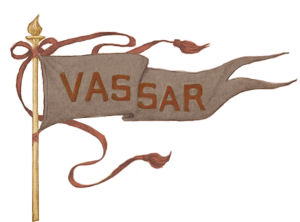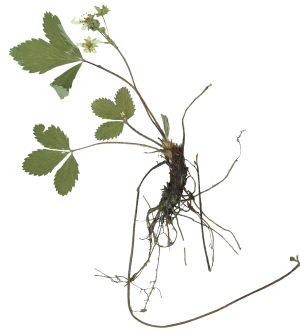Table of Contents
- Collection Summary
- Biographical Note
- Scope and Content Note
- Subject Headings
- Related Material
- Administrative Information
- Access and Use
- Encoding Information
- Series List
- Container List
Collection Summary
| Repository: | Archives and Special Collections Library, Vassar College Libraries |
|---|---|
| Creator: | Claflin, Agnes Rindge, 1900-1977 |
| Title: | Agnes Rindge Claflin Papers |
| Inclusive Dates: | circa 1901 - circa 1977 |
| Bulk Dates: | 1927-1934 |
| Quantity: | 3.3 cubic feet (5 boxes) |
| Abstract: | The bulk of the Claflin collection is from the years 1927-1934, the period in which she received her graduate degrees and began to teach at Vassar College as an associate professor and later as a full professor. While the collection itself is mainly made up of correspondence, it also contains an eclectic selection of material, including: various drafts of her doctoral thesis, newspaper clippings concerning her career, programs of exhibits, class notes and assorted miscellanea. |
Biographical Note
Agnes Millicent Rindge was born on May 19, 1900 in Grand Rapids, Michigan. Upon graduating the Madeira School in 1917, she attended Mount Holyoke College for two years, and in 1921, having being elected to Phi Beta Kappa, received her B.A. magna cum laude from Radcliffe College. In 1923, Rindge joined the faculty of the Vassar Art Department as an instructor. She returned to Radcliffe to do graduate work, receiving her M.A. in 1927 and her Ph.D. in 1928. In the fall of that year, Rindge rejoined the Vassar Art Department as an associate professor. After three years, she was promoted to the rank of full professor. Rindge was director of the Vassar Art Gallery (1943-1962), Chairperson of the Art Department (1943-1965), and Mary Conover Mellon Professor of Art (1961-1965).
Her most extensive written work is Sculpture which was published in 1929. Subsequently, she wrote The Elder Pieter Bruegel: A Short Essay (1936), as well as numerous articles for publications such as International Studio, Parnassus, and Formes.
Over the course of several decades, Rindge lectured at many of this country's foremost institutions of higher learning, including: New York University Institute of Fine Arts, Chicago Art Institute, Wadsworth Athenaeum, Columbia University, Yale School of Fine Art, and at other universities too many to enumerate.
During World War II, Rindge served as Executive Secretary and Consultant in the Art Division of the Coordinator of Inter-American Affairs (1941-1942), and continued as Consultant in the Program of Cultural Relations with Latin America, where she was concerned with the circulation and exposure of Latin American Art within the United States.
At approximately the same time, she became a member of the Advisory Committee of the Museum of Modern Art (1944), and served as Assistant Executive Vice President of the Museum (1943-44). In connection with a Calder Sculpture exhibition held at the Museum of Modern Art, she wrote and narrated a film entitled Alexander Calder: Sculpture and Constructions.
Rindge was active in many art organizations, including membership in the Commission on Arts of the American Association of Colleges (1939), Chairperson of the Committee on Fellowships of the College Art Association (1945-1948), member of the Editorial Board of Art in America (1940-1943), as well as President of the American Federation of Arts (1944-1945).
Her associates included Alfred Barr, founder of the Museum of Modern Art, A. Everett Austin, head of the Wadsworth Athenaeum, as well as artists such as Alexander Calder, Eugene Berman and Pavel Tchelitchew.
Rindge was noted for her colorful manner of dress and for having, as one former student and later colleague put it, a "verbal wit and playfulness that so often outran pedestrian minds." Yet Rindge was also known not to accept less than what she felt a person capable of -- "She had expectations, and when they were fulfilled she was encouraging; when they were not, one felt one had placed more than oneself in jeopardy."*
In 1945, Miss Rindge married Philip W. Claflin, a captain in the U.S. Army. Mrs. Claflin was awarded an honorary degree of Doctor of Letters from Wheaton College in 1962, and a year later received the Graduate Society Medal from Radcliffe College. She died on June 12, 1977, at the age of seventy-seven.
*Quotations from Pamela Askew, Bulletin of the Vassar Art Gallery, Claflin collection, Box 6, Folder 93.
TopScope and Content Note
The bulk of the Claflin collection is from the years 1927-1934, the period in which she received her graduate degrees and began to teach at Vassar College as an associate professor and later as a full professor. While the collection itself is mainly made up of correspondence, it also contains an eclectic selection of material, including: various drafts of her doctoral thesis, newspaper clippings concerning her career, programs of exhibits, class notes and assorted miscellanea.
TopAccess and Use
Access
This collection is open for research according to the regulations of the Vassar College Archives and Special Collections Library without any additional restrictions.
Restrictions on Use
Permission to quote (publish) from unpublished or previously published material must be obtained as described in the regulations of the Vassar College Archives and Special Collections Library.
Subject Headings
Organizations:
- Vassar College--Faculty
Subjects:
- Art--Study and teaching
- Women college teachers
Document Types:
- Clippings (information artifacts)
- Correspondence
- Financial records
- Photographs
- Printed ephemera
VCL Categories:
- Art and Artists
- Family
- Vassar College
Encoding Information
Encoded by Laura Streett, January 2009. Updated by Emma Gronbeck, February 2024.
TopAdministrative Information
Preferred Citation
Agnes Rindge Claflin Papers, Archives and Special Collections Library, Vassar College Libraries.
Processing Information
Processed by Jonathan S. Lubliner, 1983.
Updated by Laura Streett, 2016.
Updated by Emma Gronbeck, February 2024.
Accession M2019-034 is currently unprocessed.
Acquisition Information
Photocopies of correspondence between A. Everett Austin, Jr., et al. and Claflin, were the gift of the Wadsworth Athenaeum, Hartford, CT, April 1991.
The class notes, postcards, and photos in boxes 3 and 4 were donated by Christina Houghtaling, VC 1974, in October 2015. Ms. Houghtaling rescued the material from a dumpster on or near campus some time after Claflin's death. [M2016-001]
Teaching materials and correspondence were transferred from the Vassar College Art Department, 2016. [M2019-034]
Baby photograph of Agnes Rindge Claflin in Folder 154 was the gift of Julian Rebelo, February 2024. [M2024-005]
The source of the rest of the collection is unknown, although some material was likely transferred from the Art Department, circa 1977-1981.
Series List
Series I. Personal Material, 1910-1935 (Box 1) | |
|---|---|
| This series includes correspondence with parents, letters to relatives and childhood friends, as well as information on her wedding and the death of her mother, Miriam Rindge. |
Series II. Professional Material, (Box 1) 1929-1963 | |
|---|---|
| This series consists of material related to Claflin's professional activities outside of Vassar College. |
Series III. Harvard University, 1926-1932 (Box 1) | |
|---|---|
| This series includes Claflin's correspondence with Harvard professors and personnel, as well as class notes and several versions of her published doctoral thesis, Sculpture. |
Series IV. Vassar College, undated (Boxes 1-2) | |
|---|---|
| This series contains correspondence with faculty, alumnae and students and official faculty memorandums among other things. |
Series V. Financial papers, 1928-1936 (Box 2) | |
|---|---|
| The three boxes of this series contain personal bills, letters concerning salary, canceled checks and bank statements. |
Series VI. General Material, circa 1901-1934 (Boxes 2-4) | |
|---|---|
| This series is, for the most part, a "catch all" category; many of Claflin's friends were also her colleagues and vice versa -- many items which could not realistically fit into the aforementioned groups were placed here. Much in the way of personal and professional correspondence that did not meet the guidelines of the overall scheme have been arranged alphabetically in the General Material series. Also included:Index cards with photographs, organized by subject, and miscellaneous post cards and photographs of actors (M2016-001). |
Series VII. Addition: M2019-034, 1929 - circa 1977 (Box 5) | |
|---|---|
| Correspondence, teaching materials, and printed material related to Claflin's work in the Vassar College Art Department. |
Container List
Return to the Table of Contents
Details
The bulk of the Claflin collection is from the years 1927-1934, the period in which she received her graduate degrees and began to teach at Vassar College as an associate professor and later as a full professor. While the collection itself is mainly made up of correspondence, it also contains an eclectic selection of material, including: various drafts of her doctoral thesis, newspaper clippings concerning her career, programs of exhibits, class notes and assorted miscellanea.

